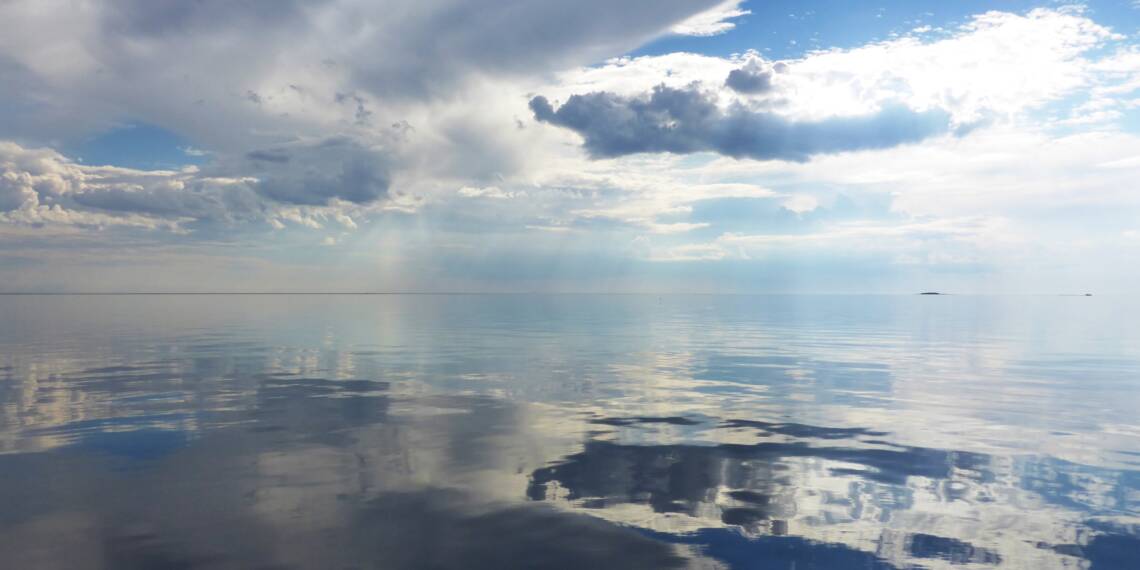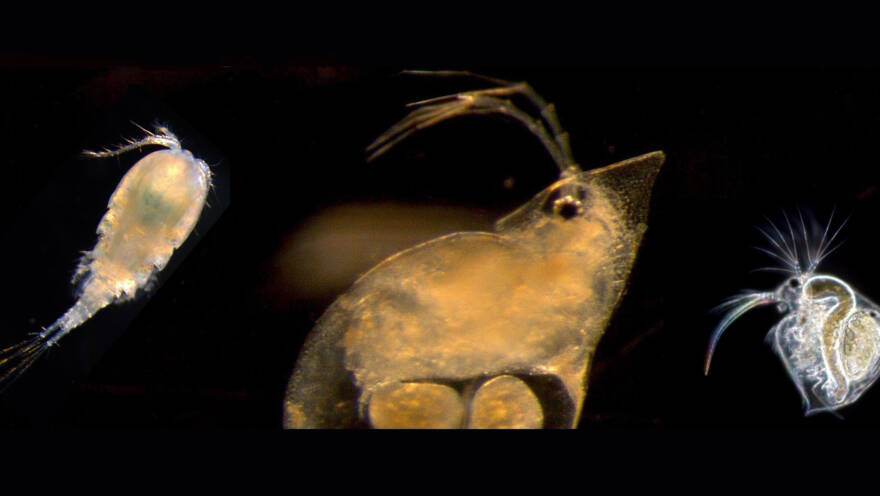
The open sea and the invisible inhabitants of the water column
The open or high sea means a large open marine area in which the horizon is bounded in at least one direction by the sea and not by land. The outer reaches of the Finnish coast are naturally located in the outer archipelago and areas of the open sea. The high sea is an important distribution route for both species and habitats.
Seals
The Baltic ringed seal is an arctic species whose reproduction is dependent on sea ice and snow. This species occurs mainly in the Bay of Bothnia. By comparison, the grey seal is larger, more numerous, and more widely spread than the ringed seal. Both species are fish eaters.
Plankton
The term plankton includes both plant and animal species, as well as cyanobacteria. More commonly known as blue-green algae, cyanobacteria are also a type of plant plankton, i.e. phytoplankton, and are usually found near the water surface. Animal plankton (zooplankton) species include water fleas, which feed on phytoplankton.
Baltic herring
Herring live in large shoals. They eat zooplankton as their main food and as larger fish will also eat small fish. Many waterbirds and seals eat herring for food. Herring is the most important catch in commercial fisheries, both in terms of value and quantity.
Birds in the archipelagos
Typical birds are cormorants, razorbills, black guillemots, white-tailed sea eagles, and seagulls. These birds eat fish while sea-eagles also prey on other birds. Birds nest and rest on rocks and islets in the outer archipelago areas. Cormorants, guillemots, and razorbills live in large colonies.
Although the water column forms most of the open sea’s ecosystem, its functions are also affected by organic matter sinking to the seafloor, as well as upwelling currents which bring bottom material back into the water column.
The species and food web structure of the Baltic Sea’s open sea ecosystem is mainly determined by the physical environment, such as salinity, depth, and the stratification of water.
The open sea covers a wide area
The open sea areas along the Finnish coastline cover a distance of 1,300 kilometres, and there are great differences between them. The deepest and most saline and water is found in the Archipelago Sea and the Western Gulf of Finland. Correspondingly, due to river runoff, the waters in northern reaches of the Bay of Bothnia and the eastern Gulf of Finland are almost fresh. The salinity of the Finnish open sea areas ranges from about 3 to 6.5 ‰.
The large distances between the southern and northern waters also lead to seasonal variations in light, water temperature, and ice cover.
Vertebrate predators form the apex of the food web of the high seas
In addition to fish and seals, the water column in the high seas is a habitat for many tiny organisms. Primary production relies on phytoplankton, which in turn serves as food for zooplankton. These tiny invertebrates are eaten by larger invertebrates, such as crustaceans, mysid shrimps, mussels and barnacles, which in turn end up as prey for fish, birds, and seals.
In the open seas, dead organic matter either sinks to the bottom and accumulates there or is released from the bottom sediments back to the water column by the actions of decomposer organisms. The production levels of the high seas determine the amount of organic matter sinking to the seafloor, which in turn affects the amount of food available for benthic organisms, as well as the oxygen conditions of the sediments.

The abundance of biota varies both regionally and seasonally
The peak of phytoplankton production, i.e. the spring bloom, occurs in the Archipelago Sea and the Gulf of Finland generally between April and May, in the Bothnian Sea by mid-May and in the Bothnian Bay by mid-June. The predominant species of the spring bloom are diatoms and dinoflagellates.
As the water warms, the abundance of zooplankton increases markedly, reaching its peak in late summer. The most abundant groups are rotifers, water fleas, and copepods.
In late summer, the cyanobacteria, commonly known as blue-green algae also proliferate, forming large surface rafts or blooms almost every summer. In the Bay of Bothnia, diatoms (Bacillariophyta) flourish throughout the growing season.
As the water cools in the autumn, the abundance of plankton in the water column decreases as many species form a resting phase which sinks to the bottom sediments. In spring, these will develop into a new plankton population.
Eutrophication and climate change are changing algae communities and the open seas
Eutrophication can change algae communities to the detriment of zooplankton, which affects the rest of the food chain. Also, the decrease in salinity due to climate change, in turn, is reducing the numbers of large marine species of zooplankton, which also undermines the quality of the available food in the food chain.
Did you know?
Many bottom-dwelling or benthic animals, such as amphipods and mysid shrimps, rise from the bottom under cover of darkness to feed in the water column. As the darkness fades, these invertebrate animals once again hide in the refuge of the bottom sediments. Also, many benthic animals release their juvenile larvae to swim about and feed among the zooplankton of the open sea.
-
 Find out more
Find out morePlankton
-
 Find out more
Find out moreMarine mammals

